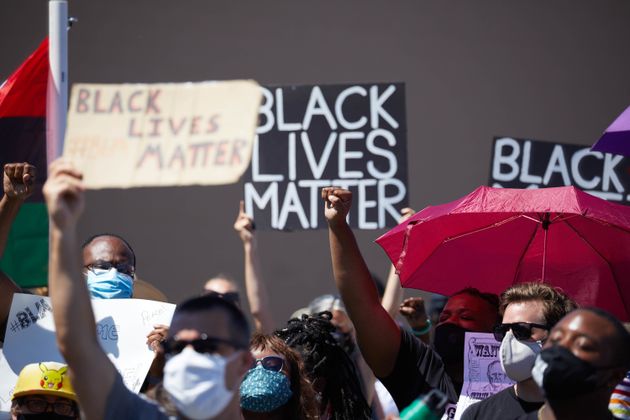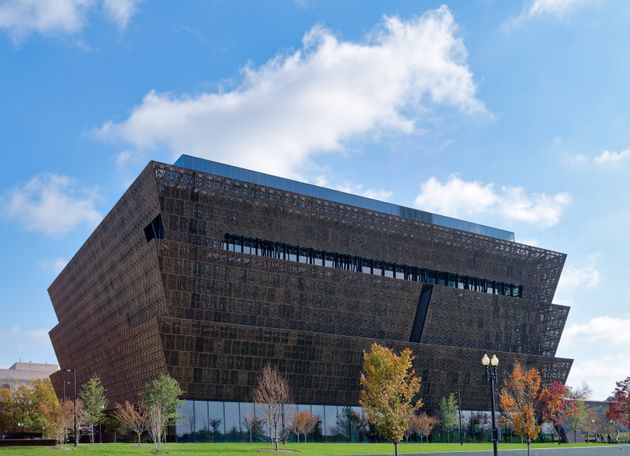
Ten former staff and board members of the world’s largest museum complex have urged executives to address an alleged long-standing “culture of racism” at its museum of African art in Washington, DC.
A group of former staff members at the Smithsonian National Museum of African Art (NMAfA) have accused their leadership of turning a blind eye to concerns of bigotry in a two-page letter seen by HuffPost.
The letter’s signatories are calling for the resignation of the NMAfA’s deputy director and chief curator Christine Mullen Kreamer to “enable real, systemic changes in the museum’s practices and policy implementation”.
The letter was addressed to Smithsonian secretary Lonnie G Bunch III, who last year became the first Black person to serve as the institution’s head and now oversees 19 Smithsonian museums.
The letter alleges that more than 10 former or current Black employees have “reported or experienced incidents of racial bias, hostile verbal attacks, retaliation, terminations, microaggressions and degrading comments,” all of which have been ignored by management when raised formally.
On several occasions, managers at the museum have attempted to promote white employees into vacant roles while disregarding the institutional policy requiring a competitive application process, former staffers said.
“Persistent racial disparities at NMAfA are apparent in the application of institutional policies,” the letter reads.
“Recent events have brought deeper attention to systemic racism within museums across our country. In this spirit, we write to you to express our outrage about the current state of the Smithsonian National Museum of African Art.
“Our goal is to collectively express our concerns and to engage in building an equitable and inclusive museum for our community.”

One former staffer claims just five full-time Black employees worked at the museum at the time they left – out of more than 40 staff members – which is solely dedicated to the arts and culture of Africa.
They also say there were no Black curators at the museum and, for more than 10 years, its entire curatorial team had been exclusively white despite what the letter’s authors describe as a “demonstrated interest amongst Black arts professionals and scholars in joining the institution”.
The Smithsonian Institute did not comment on claims about the diversity of the museum’s staff.
Kreamer, deputy director and chief curator at NMAfA, has allegedly had “multiple complaints” filed against her by employees concerning racism, aggression and mismanagement, according to the former staff members.
These complaints include alleged abuse of her hiring and promotion authority in favour of white employees and “consistent bullying and hostility” directed toward Black colleagues who raised concerns about her behaviour, the letter claims.
Kreamer, who joined the curatorial staff at the National Museum of African Art in 2000 before being promoted to her current role in 2009, did not respond to HuffPost’s request for comment.
The letter’s signatories are calling for a replacement to be selected from a diverse pool of candidates – and the position of deputy director and chief curator “to be separated to ensure effective management of the museum”.
From 2019 to 2020, two senior Black employees in key roles were suddenly dismissed without any evidence of underperformance or unethical behaviour, former employees have said.
By contrast, the letter claims, white colleagues who exhibited “sub-par performance” were offered special counselling, expanded job responsibilities or redeployment to new positions.

Black staffers claimed NMAfA managers created obstacles to their ability to do their jobs, but gave white employees chances to develop such as speaking engagements and conference work, the letter says.
The former employees claim the “toxic” culture of racism at NMAfA did not improve under former director Gus Casely-Hayford’s tenure between 2018 and his departure in 2020.
“This situation became particularly distressing under Gus Casely-Hayford, resulting in negative impacts on Black staff, as well as NMAfA’s reputation within the broader community,” they wrote about the Black British curator in the letter.
Casely-Hayford did not respond to a request for comment.
One letter signatory, who asked not to be named, told HuffPost: “Unfortunately these incidents and concerns about systemic racism only grew during Gus’ tenure. He did nothing to address them. […]
“It’s so important that there’s self examination within the Black community and there’s a discussion about internal racism.”
The letter’s signatories say the police killing of George Floyd and the Black Lives Matter movement that followed have presented the opportunity to raise their concerns with fresh optimism about being heard.
“I think about George Floyd’s life and this would not be happening right now if it wasn’t for what happened,” one told HuffPost.
“Six months ago, if we had tried to speak out in this way, talking to journalists or galvanising in this way, I think there would be a reluctance to address this issue, and it’s even harder to do this when there’s a Black person in leadership.”
Six months ago, if we had tried to speak out in this way, […] there would be a reluctance to address this issue, and it’s even harder to do this when there’s a Black person in leadership.
Another signatory, who also didn’t want to be named for fear of repercussions, echoed these sentiments.
“It is a pivotal moment for people of colour to be able to speak their truth and, where people of colour have had bias affect them, be able to talk about it with the mindset that there is a platform now that supports the ability to do that,” the signatory said.
“The Black Lives Matter movement focuses specifically on police brutality and the vulnerability of people of colour — but if you look at many different industries, organisations are now self-reflecting and, at the same time, people of colour are looking at this as a time to speak up,” they said.
It is not the first time a letter has been sent to the Smithsonian outlining these concerns, according to the former employees.
In early 2020, nine members of the NMAfA’s 13-person advisory board wrote of their concerns about the treatment of Black staff members following the dismissal of a Black employee on the museum’s senior leadership team by Casely-Hayford. The worker had just one week left of her one-year probationary period, and there were no grounded complaints about her performance or behaviour, it is alleged.

Casely-Hayford, a successful Black man who was in a powerful position at the Smithsonian, stands accused of not doing enough to help Black people subjected to racism within an organisation that champions Black art.
“As a person of colour in a titular position, I think there’s a responsibility to make sure that diversity and inclusion – particularly inclusion – are at the front and centre of the organisation,” the first signatory said. “It’s not just about hiring people of colour to make up the numbers. It’s about making sure there is fair and equitable opportunity in that particular organisation for people to be seen, heard and able to progress.”
They added: “There’s often a tendency to open the door for yourself and do well in your career — but the mark of your legacy is that you open the door behind you and bring more people forward.”
Seven recommendations for improvements have been suggested to the Smithsonian’s leadership in the letter, including a pay equity plan for Black employees; a review of all firings, alleged racially driven incidents and complaints during the past five years; and a public commitment from the museum to improve representation and career advancement of Black employees.
Editor’s note: Following the publication of this article, a Smithsonian spokesperson sent the following statement to HuffPost on Tuesday.
“At the National Museum of African Art, we are committed to increasing diversity across the museum and all disciplines; equally essential, we are cognisant of the need to recruit, employ and empower more curators and artists that represent diverse fields and backgrounds.
“While our collections and exhibits represent a rich diversity of thought, artists and scholarship, we recognise that we must continue to increase diversity within the museum, and drive inclusive behaviour among all Smithsonian staff.
“As a federal entity, we have established policies and processes in place to review employee complaints, and other human resources matters. Museum supervisors receive training and must abide by government-wide federal regulations. At the Smithsonian, not only do we adhere to these rules – fairness and equity are core to our culture, mission and who we are as a leader in the museum field.”